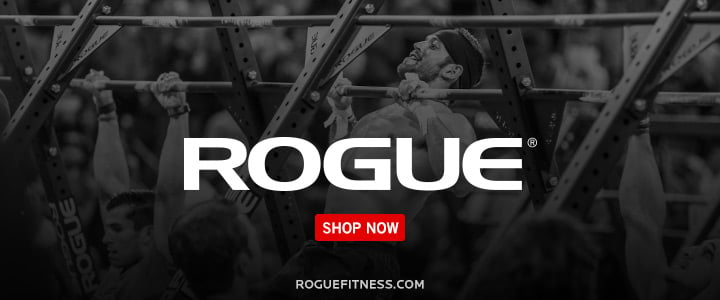HYROX is coming to Dublin.
Naturally, I decided I don’t want to do it – I want to win the damn thing. So, I reached out to the North American Champion David Magida.
David’s main sport growing up was cross-country and track before joining the wrestling team. When he graduated high school he was pretty lean at 135lbs. Honestly, we couldn’t have less in common at this point. During college David started football and bulked up to over 200lbs. Now we’re talking.
Soon after David started running again and leaned out a little, but, kept a lot of his muscle. “When I’m on the start line of a marathon or race I’m the biggest guy by 50/60lbs but I can run with these dudes,” he explained. Now David owns Elevate Interval Fitness with strength, endurance and intervals the mainstay in the gym.
So, David and I don’t have a lot in common, that’s ok – there’s been plenty of successful HYROX racers. “In general it’s suited to an athlete who’s not quite your typical CrossFit athlete, you have to be a good endurance athlete. You have to be able to run pretty well,” he said. “You have to have an engine and an exhaust, you have to be able to flush out and keep going, an incredibly lactate threshold is key. You should have a decent squat and deadlift but it’s more so the ability to lift over time than to lift super heavy,” he continued.
David ran the New York Marathon in 2021, a few weeks after coming 5th in the HYROX World Championships, in 2hours37mins. “HYROX training keeps you ready to run and really to do most sports. If you took a CrossFit athlete who is more endurance based they’d do pretty well with a few weeks training and they’d see significant impact from the training in their performance because of its specificity,” Magida said, before adding, “The training is broad and varied but you don’t do gymnastics or as many high skill movements as CrossFit. you’re really just focused on fitness.”
Once David had effectively proven to me that I was never going to come anywhere near winning a race and might, in fact, struggle to fill in the registration form without losing breath never mind take part, we dove into what HYROX training looks like.
“I do a ton of running volume, still running 30-50 miles a week. A long or hard run and a track workout with intervals or speed work along with a lot of machine work. Two long grind workouts with row or ski for longer grindier [sic] intervals and then four intensity workouts a week with sprint intervals,” he said, before adding, “A recovery workout could be 600 calories on the assault bike.”
He also does some strength trainings following his strength protocol as well as some muscle endurance with higher rep squat sets and some sport specific workouts with wall balls and sled work. “The top guys are training 2-4 hours a day, I try to stay close to 2 hours a day, plus mobility and body work alongside the training.”
“You also do some skill work, not to the same extent as CrossFit but little tweaks to your technique can make a big difference to sled performance and burpee broad jumps. Little improvements can help you sustain and keep your heartrate down and will pay dividends,” he said.
Now that any shred of doubt of me winning a race was removed without mercy, we moved onto what an average contestant could work on to improve their performance in a HYROX race.
“Start running and do it compromised, so, every mile do 30 burpees or 100 lunges, get used to running with heavy legs because that is the difference with HYROX and other races. I would also doing a simulation or two before a race so you don’t burn out in the first 20/25 minutes of what will be a pretty long event,” he advised.
“A mistake people make is going out too hot in the first two or three stations, especially the first run, people head out and don’t realize they’re going too hot, even 15 seconds too fast is going to cost you five minutes or more on the back end. Understanding your work rate too, knowing that pace you use in a 20-minute metcon is too hard for HYROX and understanding that its a trap that’s set for your heartrate, lungs and lactic build up,” he continued.
“Don’t over work the sled. Anyone who’s strong thinks that’s where they gain time. You should aim to expend less not work harder, don’t try to beat them just come off the sled feeling good and able to still run. Your running rate should never change and taking it easy on the sled is key to that, if you lose it by going to hard on the sled it really doesn’t come back”.
I asked David what the biggest thing someone can do to prepare well and perform well at a HYROX race. “Running for 5 or 6 hours a week is going to pay dividends more than anything else you can do. As good as you might be at wall balls or rowing, half of the race is running. When I do the event it’s almost an exact split between running and stations so if my running isn’t falling apart after the stations, I’m gonna have a great day.”
After I spoke to David I bought a wall ball and then did exactly what you and I both expected me to do, nothing.
But, I will be picking up my running again and aiming to get it from consistently avoided to consistently begrudgingly done. I might not, no, I definitely and undoubtedly won’t win a HYROX race but I can almost certainly survive one.
David sells his own training program, Magida Peak Performance, and you can get a 25% discount if you use code ’25OFF’.

